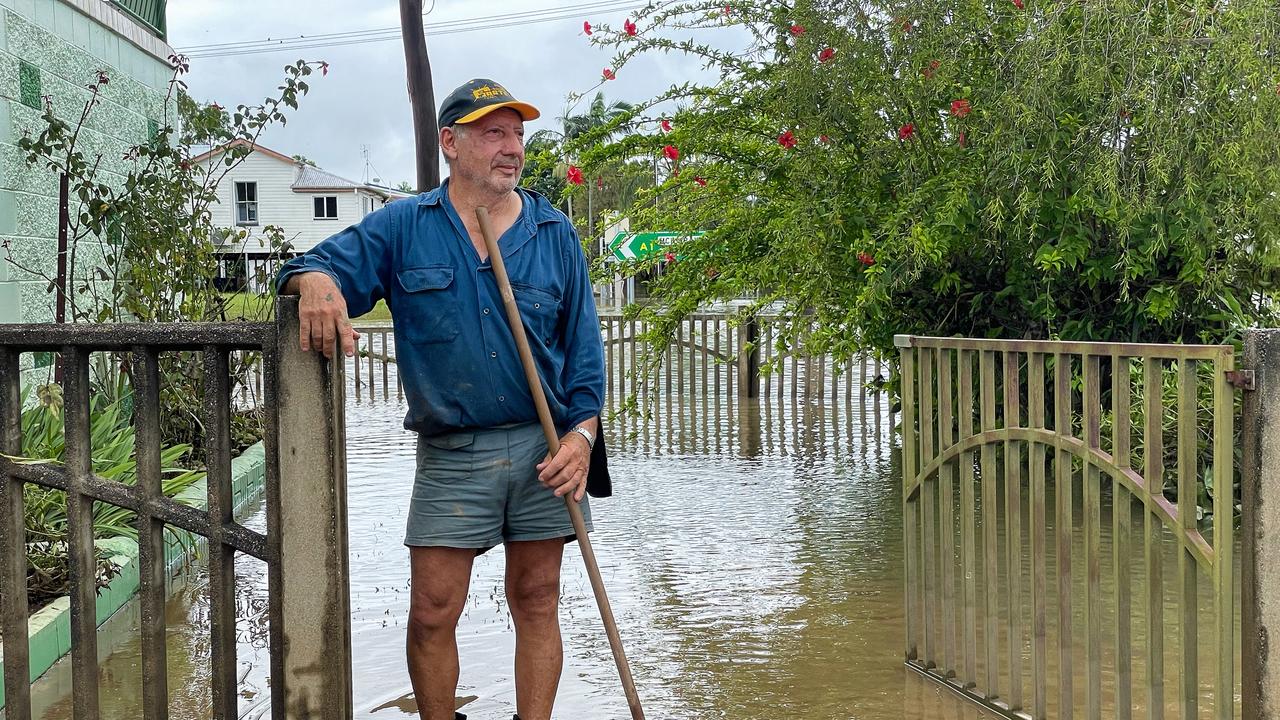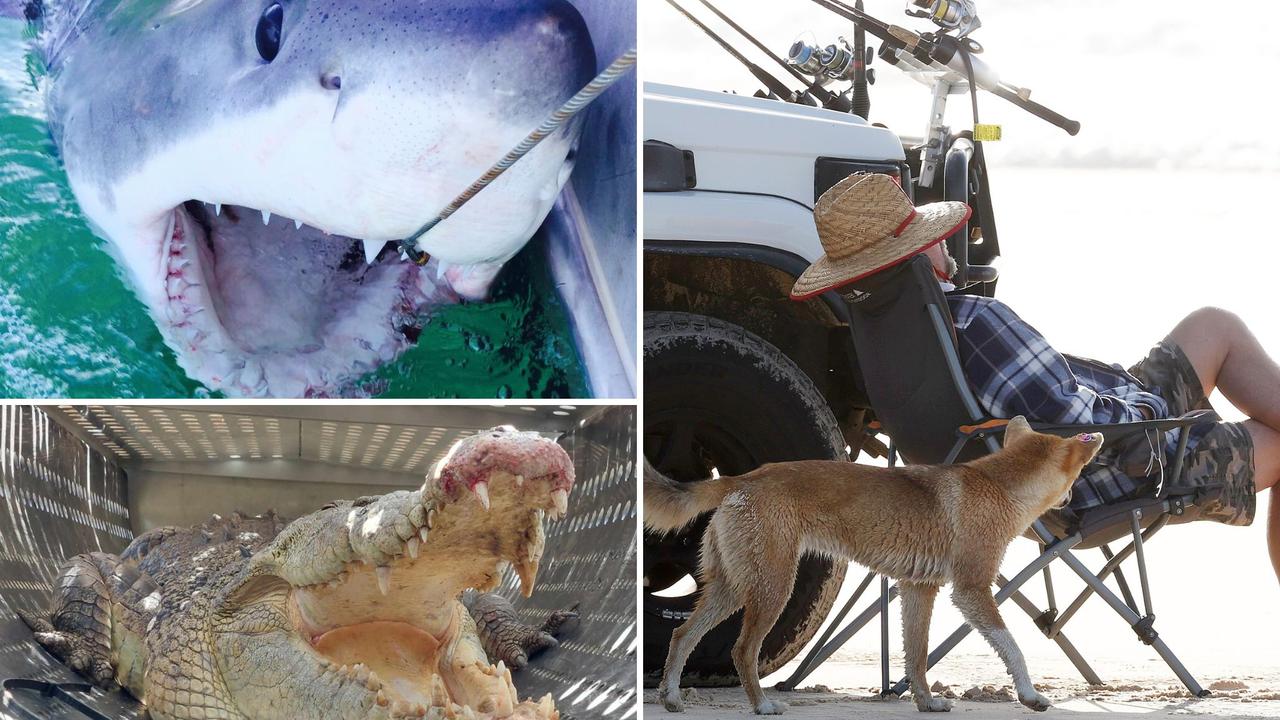Sexting: Should teens be left to their own devices?
TEENAGERS are increasingly sharing scantily clad and naked pictures of themselves with peers through social media, and experts say the long-term consequences can be alarming.
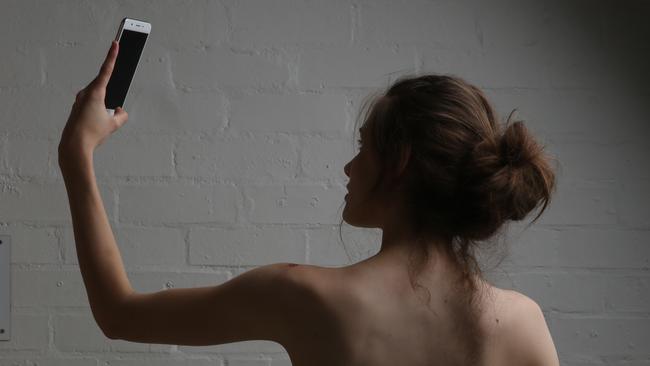
QLD News
Don't miss out on the headlines from QLD News. Followed categories will be added to My News.
- Sexting: Avalanche of violent porn corrupting our young
- Generation sext: Eradicating sexting scourge a priority
- Sexting: Who is to blame for our kids’ sexting scourge
- Generation sext: Girl, 4, sexually assaulted by boy, 9
- Sexting: Should teens be left to their own devices?
“Name something people might do in the snow … ”
From her bedroom, Alex can hear her parents and little brother shouting out their answers to television host Grant Denyer’s questions on Family Feud. For a moment she thinks she might join them, snuggle down between her mum and dad on the couch – maybe give her little brother a dead arm. But such things are for children, and Alex is 14, and has crossed that line between when hanging out with your family is all you want to do, and when hanging out with your family is the last thing you want to do.
Alex picks up her phone from the bedside table, flips the camera icon around, and considers the dark-haired girl looking back at her. She slides her eyes to the side. Bites her bottom lip. Smiles. Doesn’t smile. Throws a peace sign. Tilts her head. Tries on a few faces, a few moves.
She takes off her T-shirt, then her bra, and pulls her stomach in. Alex stares at the girl on the screen, and thinks she looks exactly like herself, and like someone else completely at the same time. Alex thinks she looks a little bit weird, but also maybe a little bit hot. She clicks on the circle at the bottom of her screen, taps the arrow in the bottom, right corner, and hits send.
Outside, her parents and brother are still watching The Feud. “Name something people do in the snow … ” Denyer prompts a contestant. “Make snow angels,” Alex says, keeping her eyes on the screen.

DETECTIVE Inspector Jon Rouse and his team at Task Force Argos – named for the primordial creature of Greek mythology – has been, like its namesake, keeping watch on the world’s most vulnerable children for 19 years.
Working from a huddle of offices on the second floor of Queensland Police’s Brisbane headquarters, Argos’s charter is simple: to identify, locate and rescue sexually abused children around the globe. As 52-year-old Rouse says, their mantra is this: “Where is the child? Find the child. Get the child out”. The 31 men and women who make up Argos dive every day into the darkest depths of the web, resulting in the rescue of hundreds of children to date, and the corresponding arrests of abusers worldwide.
In 2014, Argos’s “Operation Rhodes” dismantled a 45,000-member international pedophile network sharing millions of images of children; in 2011, after a three-year investigation named “Operation Conduit”, Argos helped to locate and rescue a six-year-old boy being offered by his two adoptive fathers for sexual abuse since toddlerhood; in 2008, the Argos-led “Operation Achilles” led to the arrests of 22 of the so-called dark web’s most abhorrent abusers worldwide. Last year, Argos rescued eight children in Queensland.
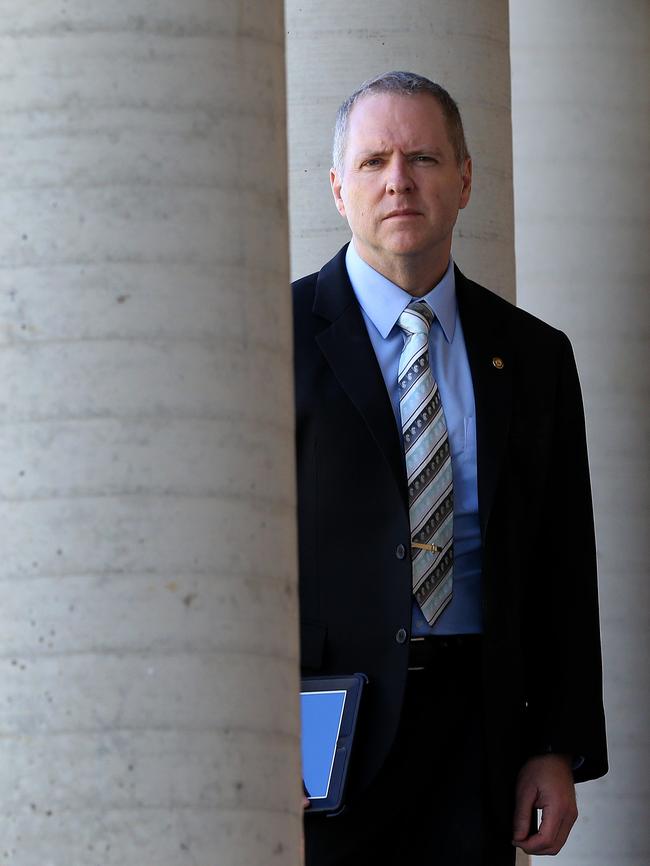
But Rouse says the very thin blue line, which begins outside his office door and stands between children and the web’s most serious abusers, is being stretched beyond its limits. Because something started to happen about seven years ago that set his alarm bells ringing, something the measured, understated cop with 32 years of policing under his belt calls “terrifying”.
“Because our unit focuses on contact child sex offenders, part of that job is intercepting material going across the internet, and using that to identify victims and their offenders,” Rouse says. “If we’re successful and we execute our search warrant, we examine hard drives.
“What we began to find about seven years ago, and in what I would now say has almost reached epidemic proportions, is material which has been self-produced that has somehow landed in the collections of child sex offenders.”
In other words, selfies, many of them more provocative than pornographic, and some of them completely innocuous – a young girl smiling and holding a new puppy, a boy kicking a footy. Somehow these images are finding their way into collections alongside material that is far more disturbing, graphic, violent and, in most cases, non-consensual.
“These sites are like bulletin boards; you basically put up what you’re looking for, and if you want to get really specific you put up countries, then states, then suburbs, then schools … it’s an open source, it’s like trawling the ocean floor and seeing what comes up in your net,” Rouse says. “It’s called harvesting.”
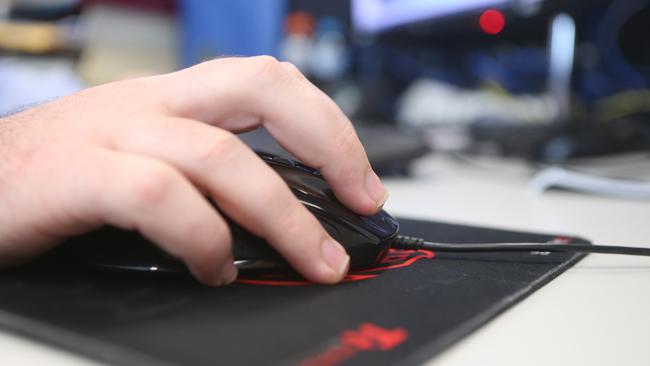
Rouse brings up a screen shot on his computer, its images blurred to protect the identity of the rows – and there are rows and rows – of young girls on it. It’s from a site that, for a few days in August at least, made Australia decidedly uncomfortable, school principals scanning the list of the 71 high schools that were featured – 17 of them in Queensland – and schoolgirls anxiously scrolling through the frames looking for their faces.
Known as the “Aussie Sluts” site, it circulates clothed, semi-nude and nude pictures of girls without their knowledge or consent. Users ask for explicit images of specific girls, a practice known on the site as “hunting”, and the successful procurement of the snaps is known as “wins”.
The language is disturbing all by itself – even without the pictures that go with it.
“Looking for nudes of (girl’s name) from ***** school, I’ll pay good money for pics of her ****.”
“I had to go to some f****** lengths for these, so I’m not just giving them away without a guarantee of some new … in return.”
“Here’s ***** and her **** – she lives in *********, go get her boys!”
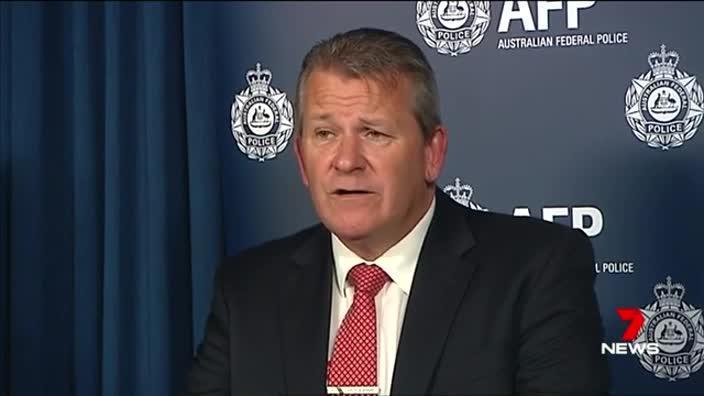
While the Aussie Sluts forum shocked those of us who do not spend our days submerged in the murkier depths of the internet, Rouse was not only unsurprised, he also predicted the site, whose IP address was traced to North America, would be up and running again within days of being shut down – and it was. Rouse says there are “a range” of sites like Aussie Sluts on the web, sprouting like weeds after rain and just as difficult to control. He calls their proliferation “horrendously concerning”.
“This really bothers me on so many levels,” Rouse says. “Because you’re looking at some very disturbing trends emerging. At Argos we deal every single day with the worst sort of predators and what we are seeing with this sort of site is very young, predatory behaviour, and a growing disengagement by some of our young men around concepts like privacy and consent.”
Rouse is also concerned the avalanche of porn online, available to anyone who owns a smartphone (figures from a February joint research snapshot from the Australian Communications and Media Authority and the Office of the Children’s eSafety Commissioner show 80 per cent of teenagers do, up from 55 per cent in 2011) or a computer, is “producing a generation of very confused young men and women about what a healthy and safe sexual relationship actually is”.
“The sort of porn we’re seeing now is markedly different to 10, even five years ago,” he says. “It’s brutalising, or humiliating, or degrading, and it drums home the lie, again and again, that this is what girls want.”
Rouse shakes his head. “I think we’re going to see some pretty alarming consequences from all of this.”
The most recent Australian Bureau of Statistics figures suggests we already may be, with 2003 youths making up 27 per cent of sexual assault perpetrators in Australia in 2015 – 770 of them aged between 10 and 14.
Earlier this year, at a Brisbane primary school, a six-year-old boy was repeatedly molested in the school toilets by two older boys; last month in NSW, two 12-year-old boys in Year 6 at a northern beaches public school were charged over allegedly raping a six-year-old Year 1 student in the school’s toilet block; and in Caboolture, north of Brisbane, police are investigating a case of sexual assault by a nine-year-old boy on a four-year-old girl.
Rouse says it’s not hard to connect the dots. “Child-on-child assaults are on the rise, and what is happening is kids are copycatting behaviour they’ve been exposed to, whether through grooming, accessing porn voluntarily or accidentally, or being shown porn by an older person, which is a not-uncommon scenario.”
Rouse, who plays lead guitar in a 1980s covers band to let off some of the steam connected to his day job, looks tired. “So this is just some of the stuff we’re dealing with while we’re trying to track down those kids being abused globally, and we need help,” he says, opening his palms up in appeal. “Because frankly what we’ve been doing so far clearly isn’t working. We’re invited into schools to give ‘the talk’ once a year about cyber safety and image-sharing, and all these kids sit there and nod their heads, but it’s not getting through to many of them – just like it didn’t get through to us in the ’70s when they told us not to smoke because it will come back and kill you later. What’s later to a teenager? Nothing. What’s forever? Nothing. Kids understand the now, the right now.”
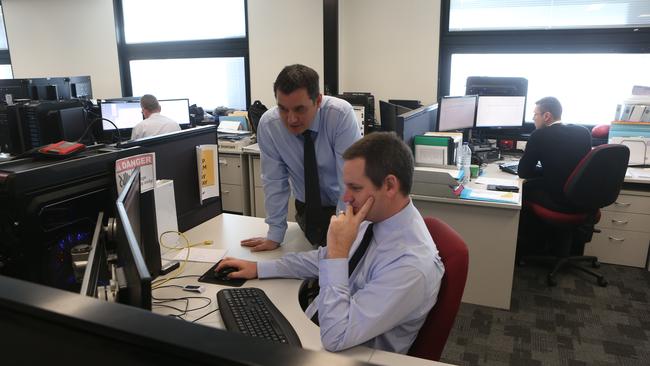
Rouse clears his throat. Shuffles in his seat a little. “So I want to say to parents to please help us, we will do everything we can to protect your kids, but we cannot do this alone. You’re the front line – so have the conversations about porn, have the conversation about sharing pictures, have the conversation with your sons and daughters about their rights to privacy and consent.
“You are paying for these devices, you are providing these devices, so take some responsibility for what’s happening on them. Don’t allow devices in their bedrooms, especially at night, get your child to show you what apps they have on their phones, and learn how to find the hidden ones. See who they are friends with online, find out what their passwords are – it’s not an invasion of their privacy, its parenting.”
Rouse believes – as do many others – that it’s time for a complete rethink, in the police department, the judicial system, in our homes and our schools about how we help what has become known as Generation Sext. “Frankly”, Rouse sighs, “I think we’ve let them down.”
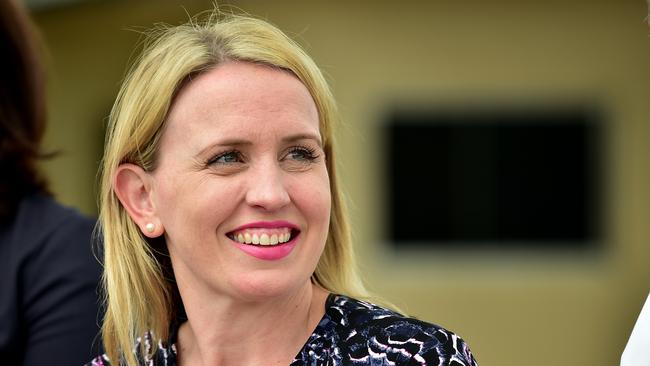
“HAVE WE LET OUR KIDS DOWN?” Queensland’s Minister for Education, Kate Jones, is asking – not as a minister, but as a mother. Jones, in charge of the 1236 primary and secondary state schools in Queensland, is also mum to a six-year-old and a two-year-old.
“As a parent I am deeply worried that we have had such a societal change in such a short amount of time, and I feel that many parents, including me, have been caught by surprise by it. The absolute explosion of the porn industry is something we ourselves had none or very little access to growing up, and now we have a generation that, even if they don’t want to look at it, are still exposed to it – it’s so disheartening.”
Jones, who won back her seat of Ashgrove, in Brisbane’s north, from a vanquished former premier Campbell Newman in the 2015 state election, agrees with Rouse that it’s time for a rethink on how we help teenagers negotiate an increasingly sexualised world. “As a minister, what I’m hearing from schools is that more young people are choosing to provide intimate photos online, and there is a growing expectation that they will share those photos.
“Some young people are exchanging what’s known as ‘trust shares’, where, after a certain amount of days, there’s different levels of photos you are expected to share with your boyfriend or girlfriend. I’m also hearing that the age group where this is happening is getting younger, with some 12-year-olds now choosing to share these sorts of images on social media.”
But Jones says she’s not only hearing the stories, she’s willing to also listen to – and implement – practical measures in schools to address them.
Given the onslaught of provocative and sexual imagery teenagers are exposed to, it seems curious that, unlike NSW, Victoria and South Australia, sex education is not mandatory in Queensland schools. However, the Education Department has begun to roll out – as a direct result of the recent Domestic Violence Taskforce recommendations, led by former governor-general Quentin Bryce – the “Respectful Relationships” program. Although primarily designed to prevent domestic violence, aspects of it explore concepts such as respect for your own body and others’, consent, the individual’s right to privacy, and gender equality.
“The crux of Respectful Relationships is that every young man and woman feels valued,” Jones says. “But while this program is broad curriculum built into everything we do in schools, every day, from Prep to Year 12, we need to consider that school is just six hours out of a 24-hour day. We should be reinforcing messages taught at home, not the other way around. We strongly feel, while the Department of Education is already making changes, that we need parents to engage with us.”
Jones says she is prepared to “look further” into the implementation of mandatory sex education in schools, and also welcomes Rouse’s suggestion that at least some of the discussions around sexuality and social media should be peer-led. “Kids are far more likely to listen to their peers than someone like me, an old cop, telling them not to do things,” Rouse says. “I think we should be training young people who have had recent, real-life experiences online to go into schools and share their stories, and offer practical help to students, from a listening ear to putting them in touch with help agencies.”
Jones agrees. “I would absolutely look at that, I would absolutely look at peer-group training – and that’s actually one idea that’s already being explored.”
IN THE OFFICE OF THE QUEENSLAND Family and Child Commission (QFCC) in Brisbane’s CBD, Commissioner Cheryl Vardon and her staff are, she says, “trying to head off the headwinds”. “That’s our job, to be aware of the headwinds, of what’s coming our way, and one of the strongest concerns, as we saw from the (2015) Justice (Michael) Byrne report into Organised Crime in Queensland, is child exploitation,” Vardon says.
“This is hideous stuff, life-destroying stuff – and frankly, the business model is crumbling.”
For the past few months, Vardon and a working group of teenagers, teachers, members of the eSafety Commission, child-safety advocates such as Bravehearts’ Hetty Johnston – and John Rouse – have been meeting regularly at the QFCC, “nutting out” new ways to talk to children and teenagers about their digital identities and relationships.
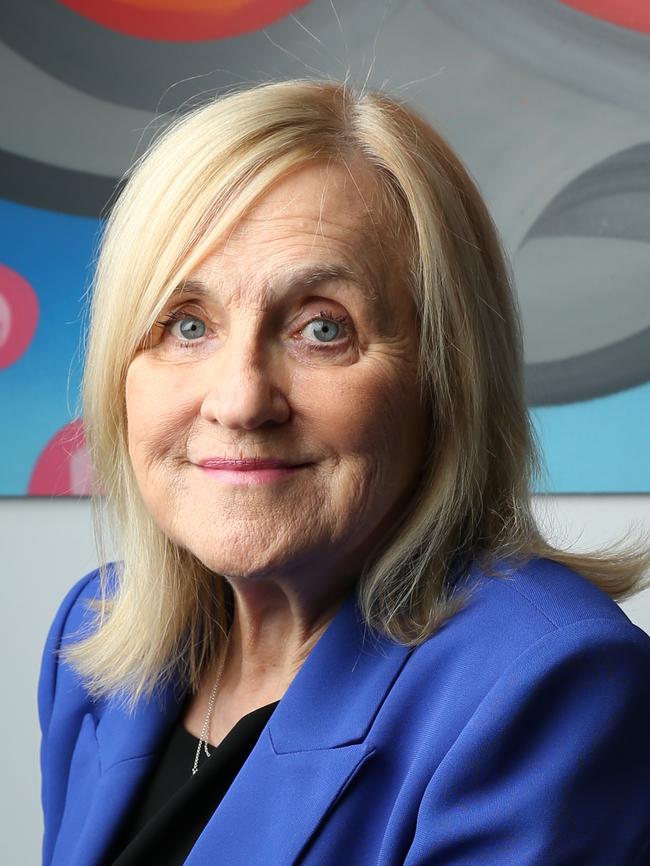
To that end, the group is working with technology students from the University of Queensland who are helping to compile a set of practical resources to be used in Queensland schools from next year. Young consultants are also to be trained to share their own stories of positive and negative online experiences, and to communicate the message to kids who are in dangerous or vulnerable situations that it’s OK to report it.
“One thing we know now for certain is that many kids who are being groomed often think they can solve the problem themselves, and we’ve had cases where a child has actually gone to meet and confront their groomer, and has ended up being physically harmed in that meeting,” Vardon says.
Last month, the Royal Commission into Institutional Responses to Child Sexual Abuse released its findings from a survey of 1000 children and young people on their views of safety. More than 40 per cent said they would not feel comfortable talking to an adult at school if they were in a situation where another adult or young person was making them feel uncomfortable. Two-thirds, however, said they would talk to a peer, and 55 per cent said they would talk to their mother, 35 per cent to their father, underscoring both Rouse’s and Jones’s belief that peers and parents have a more profound role to play in teens’ on- and off-line lives.
To illustrate how easy it is for a child to be exploited or groomed online, Rouse opens the Facebook homepage of 12-year-old “Emily” (although he acknowledges that fewer young people interact on Facebook, preferring mobile apps such as Snapchat and Kik). The homepage shows the 37 accounts of “friends” Emily has tried to add to her list.
“Thanks for the add, but who are you?’’ Christa asks.
“Do I know you from school?’’ Lisa questions.
“Don’t know you,” Jessica dismisses.
All the girls block Emily – and then one girl bites.
“Hi Emily, thanks for the add, I’m 12 too … ”
From there, a conversation between Emily and her new friend continues, back and forth, getting more intimate, closer, sharing confidences and dreams until things take a more disturbing turn.
“Hey, have you had sex yet?” Emily asks.
“No.”
“Are you interested?” “I don’t know.”
“You need someone who will be gentle with you … I know the perfect guy, give me your number and I’ll get in contact with you.”
It was at this stage of the conversation that the girl’s mother saw the exchanges, and contacted the police, who in turn handed the case over to Argos. Pretending to continue the conversation, Argos staff were able to track down “Emily”.
Rouse glances at the screen. “And here ‘she’ is.”
The image of a ruddy-faced, middle-aged man fills the screen, tuffs of wispy grey hair gathered at his ears.
“There’s a lot of ‘Emilys’ out there,” Rouse says.
THERE ARE A LOT of Alexes too, young girls exploring their sexuality in an emerging age where sexual currency is increasingly measured in “likes” and “damn, you look hawt, sistas”. There are also a lot of Ryans – the 16-year-old boy Alex sent her topless image to on Snapchat, and who she believed would not share it, because he told her he wouldn’t. “Just between us”, he’d promised, but she knew from the moment one of his friends uttered “nice tits” at her when she walked past him at the bus stop, it wasn’t.
Alex says she will never forget what it felt like to be in that moment, her heart dropping to the floor, her skin prickling, her cheeks and ears on fire. At least, that’s what it felt like. Here’s the thing. Alex says she knew the image she’d shared with her boyfriend – or, as she says, “the boy formerly known as my boyfriend” – had been screen-saved on Snapchat, that he had taken a screen shot of it before it disappeared in Snapchat’s requisite 10-second timeframe, because she’d received a notification telling her so, but she believed he would not share it.
“I really didn’t think he would,” she says, “but he did, and I really don’t know how many people have seen it.”
How does that make her feel? Alex answers without a whisper of hesitation. “Ashamed,” she says.
But here’s the other thing. Ryan – after a lot of “don’t knows”, and “it’s not as big a drama as everyone made out”, says that the thing he feels now a few months down the track after what his mother calls “the incident” – and some of his friends congratulated him on both the getting of the image and the share, and a couple more told him it was “pretty uncool”, and his parents grounded him – is also “ashamed”. “I pretty much felt like that straightaway,” he says quietly.
And here’s the really big thing, the one thing that everyone – even those voices with wildly differing opinions on just how damaging social media or the so-called “pornification” of teenagers is – can agree on. The last thing any child or teenager who takes, sends, or even shares sexually provocative or explicit images to other children or teens on social media should feel is shame.
“So we bombard our young people with sexual imagery, it’s everywhere they turn, and then we hand them a phone and expect them to self-regulate without arming ourselves, or them, with anywhere near the adequate information they need to make healthy decisions for themselves,” Rouse says. “We are not dealing with criminals, what we are dealing with is innocence, naivety, sexual exploration, and utilising technology to do that.’’
Jones says no one should be “pointing fingers” at young people. “There’s very little to be gained by getting angry at these kids, or making them feel ashamed of their behaviour; instead we should be looking at the behaviour they’re modelling, what was their motivation behind it, and whether or not they feel good about what they’re doing.”
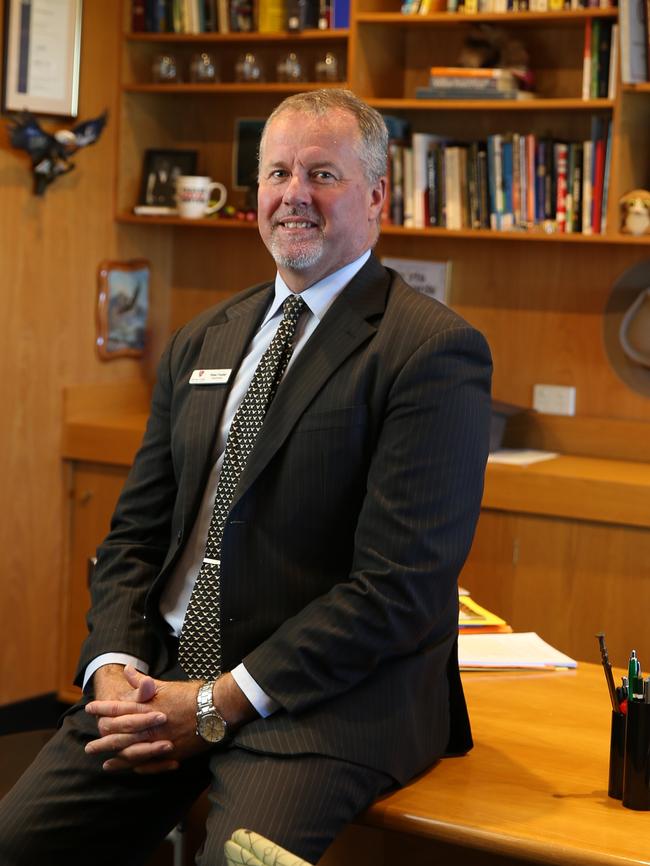
PETER Foster and Jacquita Miller are both principals of high schools, respectively Logan’s John Paul College in Daisy Hill, south of Brisbane, enrolment 2100 students, and Aspley State High in the city’s north, enrolment 816.
Both schools allow their students to have their mobile phones with them in class, and both schools have dealt with incidences of inappropriate social media sharing – and both principals are parents of teens.
And both say today’s teenagers are really no different to those of past generations.
“This is being a teenager, becoming aware of sexuality, and testing the boundaries,” Miller says. “And while the boundary lines have changed in an extraordinarily short amount of time, the motivations behind doing those things have not – wanting to gain acceptance, enjoying feeling attractive to someone, or just really liking someone and wanting them to notice you.
“Kids today need the same things we did as kids – attention, love, a safe place to go to, and support when they make mistakes or do something they haven’t really thought through in the moment.”
Foster agrees: “We need to go back to values-based education on their own ethics and how they use what is put in front of them in an ethical way,” he says.
“Yes, as a society we don’t have a handle on all this yet, and yes, it’s an extremely challenging time for parents and educators, but the people it’s the most challenging for are the teenagers themselves, and I think the most helpful thing we can do is remember that.”
Alex says she’s “mostly OK” now about the topless photo she took that night, while her family watched Family Feud, and that Ryan, the “boy formerly known as my boyfriend”, shared it with a few mates.
She worries that she’s lost control of the image, that she doesn’t know exactly where it might have ended up, but that first, prickling rush of shame she felt when she realised it had been shared has gone.
Her mum, she says, helped her through it.
Kids Help Line: 1800 551 800
Parentline: 1300 30 1300 www.parentline.com.au
Lifeline: 13 11 14 www.lifeline.org.au
Relationships Australia: 130 364 277 www.relationships.org.au
1800Respect Online: 1800 737 732 www.1800respect.org.au
Child Safety Services (Qld): 1800 177 135

